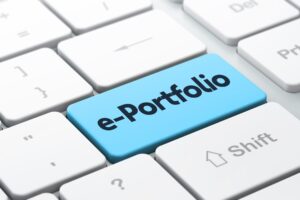Building my ePortfolio at digitalexplorers.site has been an enlightening experience. It reflects not only my progress as a graduate student and educator, but also my identity, goals, and vision for the future. This platform is not static it grows as I grow. And that, to me, is the true power of educational blogging and digital presence.
Using an ePortfolio has helped me grow in many ways as an educator. I’ve learned to reflect more intentionally on what I do and why I do it. As I write blog posts or upload samples of my work, I’m constantly thinking about my goals and the strategies I use to support my students. This reflection helps me become more aware of my strengths and areas I still want to improve. I’ve also learned new tools and digital skills that I can now use in the classroom or for collaboration with colleagues.
My ePortfolio has served as a mirror for my professional journey. Each post, reflection, and project forces me to pause and consider how I’m growing as an educator. The process aligns with Campbell’s (2009) vision of creating a personal cyberinfrastructure, where learners build and own their digital environments. Rather than relying on templated learning management systems, I engage in real-world digital publishingconnecting what I do in the classroom to a larger professional landscape.
One of the things I love most about my ePortfolio is how it can also help others. As a bilingual kindergarten teacher, I often work with students and families who are navigating multiple languages and cultures. By documenting my practices and sharing what works, I hope to support other teachers facing similar challenges. My reflections and resources can be a source of encouragement and inspiration for peers looking for creative and culturally responsive strategies.
The ePortfolio is not only beneficial for my personal development, but also for sharing knowledge with colleagues. Educators often lack time to engage with formal research, but a blog can offer quick insights, practical strategies, and reflection-based narratives. For example, through my blog, I’ve shared experiences about integrating interactive technology in kindergarten and received thoughtful feedback from peers, enriching my ideas further.
In EDLD 5302, I had the opportunity to write my Learning Manifesto. That process helped me define my core beliefs: that students deserve joy, agency, and challenge in their learning. My ePortfolio now reflects those values. It’s a space where I try to model the kind of learning I want to inspire in others authentic, evolving, and full of purpose.
The COVA model (Choice, Ownership, Voice, and Authenticity) has deeply influenced my work. It’s given me permission to choose what matters to me, own my work with pride, express my authentic voice, and ensure my learning is meaningful. My blog entries aren’t assignments they’re narratives of lived experiences, grounded in pedagogy and shaped by real practice.
Looking forward, I see my ePortfolio as a foundation for job applications, professional presentations, and community partnerships. It offers a holistic view of who I am as a teacher: passionate, curious, reflective, and always learning. As Harapnuik (2016) suggests, ePortfolios become lifelong tools, connecting learners with opportunities beyond the classroom.
Following the Department of Education’s definition, my blog is dynamic. It includes hyperlinks to resources I use, links to articles I love, and even multimedia elements like sample lesson recordings. I encourage others to comment and engage. The best learning often happens in the responses in the back-and-forth of ideas that evolve.
Here are some resources I’ve explored recently that continue to inform my journey:
Gardner Campbell on Personal Cyberinfrastructure: https://er.educause.edu/articles/2009/9/a-personal-cyberinfrastructure.
My Live ePortfolio – digitalexplorers.site: https://digitalexplorers.site
COVA Model – Dr. Harapnuik: http://www.harapnuik.org/?page_id=7481
References
Campbell, G. (2009). A personal cyberinfrastructure. EDUCAUSE Review, 44(5), 58–59. https://er.educause.edu/articles/2009/9/a-personal-cyberinfrastructure
Harapnuik, D. (2016). Creating significant learning environments. http://www.harapnuik.org
U.S. Department of Education. (n.d.). Use of blogs in education. https://www.ed.gov
